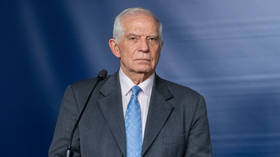World AIDS Day: a war against ignorance
December 1 marks World AIDS Day, which aims to increase awareness of the modern era’s most deadly disease. The motto this year is: “Take the Lead. Stop AIDS. Keep the Promise!”
Last year the virus claimed two million lives globally, while 33 million people struggle with the disease on a daily basis.
South Africa is on the frontline of the battle, where about 1,000 people die of AIDS daily. The combination of HIV infection and poverty has proved to be a lethal combination in the country.
Tsidi is 15 years old. She doesn’t go to school and lives in a shack with her baby and two brothers. Until recently her mother lived with them.
“She went to hospital, they put her a drip,” she said. “She said I must come to see her. When I go to see her, I checked the card but then I didn’t understand what was written. I asked the doctor. The doctor told me my mother was HIV- positive.”
Tsidi’s mother had been sick with the virus for four years. But like many people here, she was never tested and didn’t know her days were numbered.
“Now I don’t know what is going to happen. I am left with my two brothers and my baby. No one in my family,” Tsidi said. She is left alone without food, money or help.
Her fate is not uncommon in a country where hundreds of thousands of people die each year from HIV/AIDS.
It’s impossible to say how many children head up households in South Africa, but their numbers are growing.
“They are not coping but they are forced to cope,” said Diana Mkoma, a social worker. “At the age of 18, you wouldn’t know where to get your next meal. You will have your younger brothers and sisters waking up in the morning, they need something to eat before going to school.”
Children whose parents have died from the disease are most at risk of catching the virus themselves.
In many rural communities, the belief still exists that to have sex with a virgin will cure an infected person.
For years scientists have been trying to figure out why South Africa has the highest number of HIV positive people in the world.
HIV/AIDs researcher Guy De Bruin said: “lack of male circumcision is one important factor. Another important factor that may account for these differences is the prevalence of the herpes virus.”
Thirty-three million people, including 2.5 million children, live with HIV/AIDs worldwide.
Twenty-eight million have died of AIDs since 1981.












